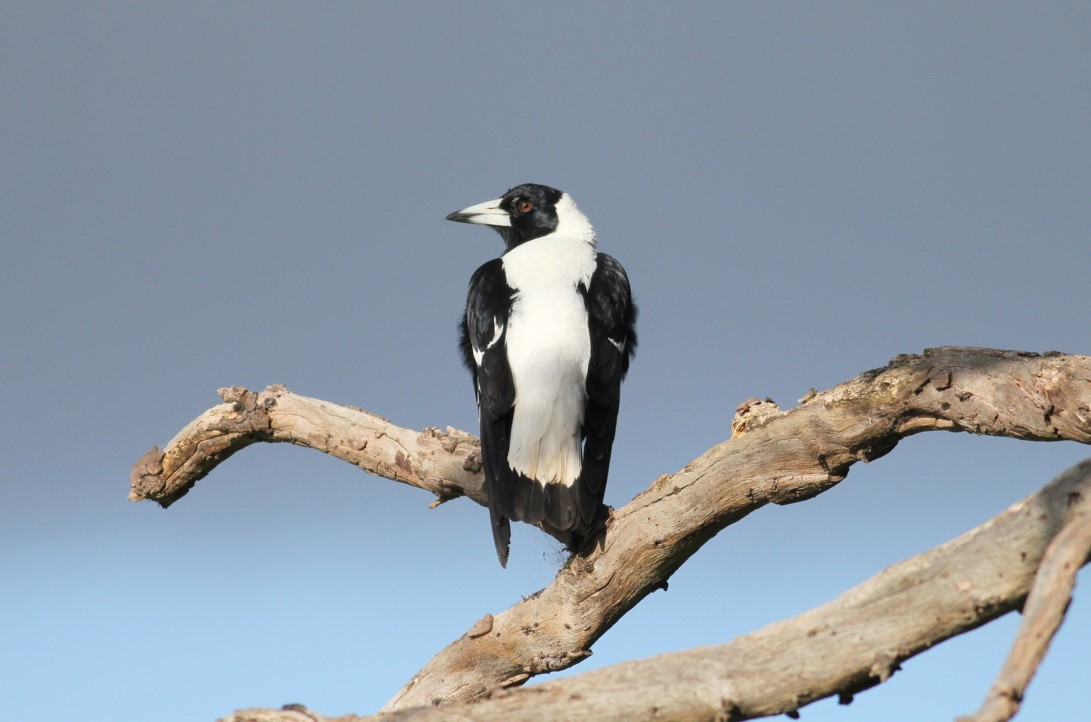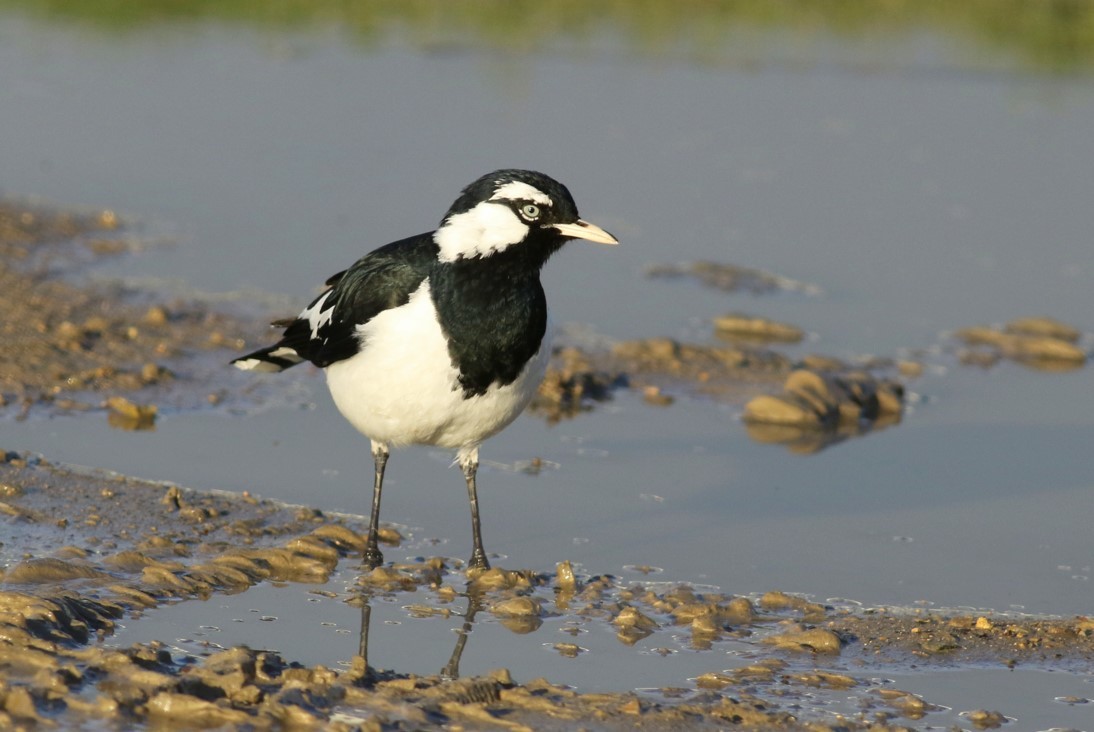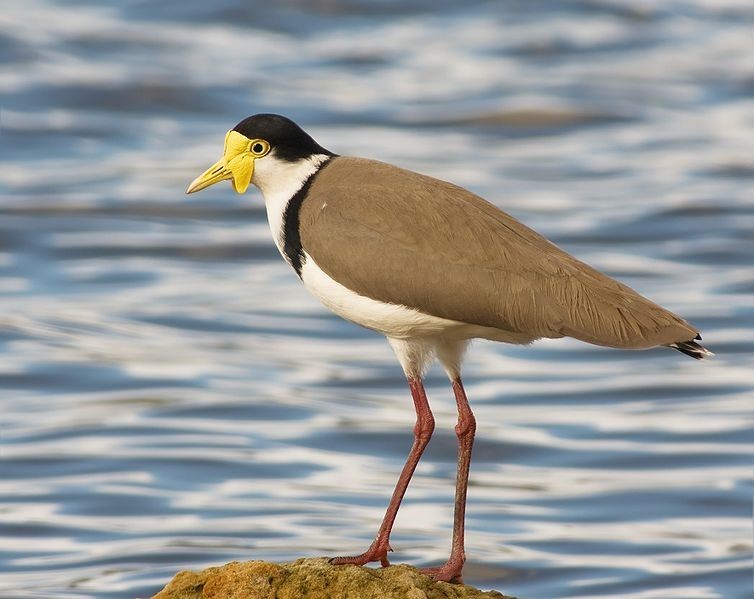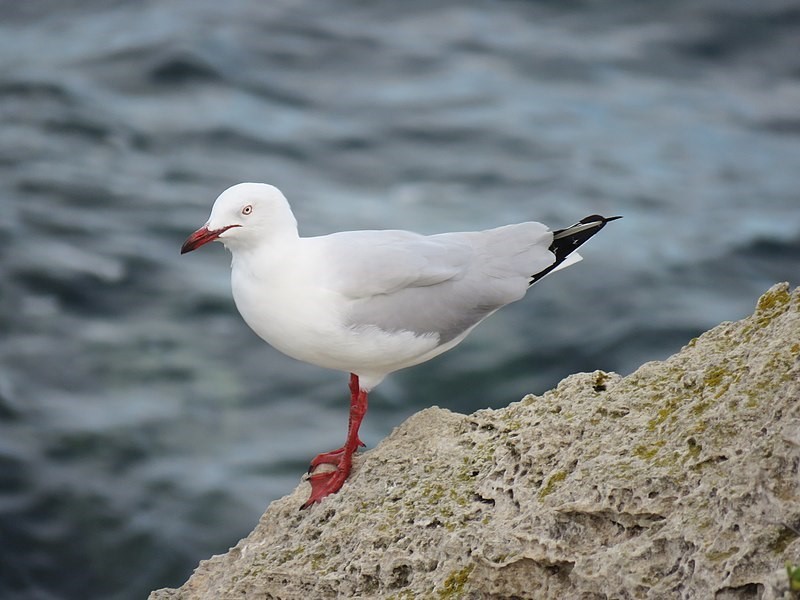Swooping season has kicked off around Australia. Learn about this breeding behaviour and some simple steps to avoid being swooped.

If you’ve gone for a walk along the River Torrens/Karrawirra Pari or attempted to ride home through the parklands you might have experienced the swoop of a magpie or masked lapwing trying to protect its nest.
While the behaviour can be a bit unsettling, there is generally a good reason that these birds swoop – and for most species it is to protect their family.
Springtime is nesting season for many birds, so we are coming into the time of year where some of our feathered friends are territorial.
Discover more about Adelaide’s swooping birds, and how you can protect yourself.
How can I protect myself from birds swooping?
There are a few simple steps you can take to protect yourself from birds swooping.
- Avoid the nest area of a known swooping bird, particularly from August to October, which is a common breeding time.
- Walk with a group of people where you can, as birds tend to swoop individuals.
- Wear a large hat, sunnies on the back of your head, or even ‘eyes’ stuck to a helmet or headwear when crossing a nesting area, as being looked at will deter some birds, like magpies.
- Use an umbrella when walking through a place with a known nesting area.
- Place signs in the area to help warn others if swooping is occurring often.
- Do not attempt to approach the swooping bird or chick.
- Don’t feed swooping birds, this may only encourage the behaviour, and feeding is generally not good for our wildlife.
You can also help to protect others by reporting swooping activity on Magpie Alert.
Which birds swoop?
Let's discover 4 around metro Adelaide:

Australian magpie
Magpies (Gymnorhina tibicen) swoop to protect their nests during breeding season, which is generally from August to October.
The female bird builds the nest, laying between 3 to 5 eggs and sitting on them for about 20 days. The male bird defends the nest, swooping at intruders to protect its family. Males tend to swoop from behind or even hover at a person or animal’s head height before making contact.
Magpies often nest in the forks of gum trees, but can also use a variety of non-native trees. They often prefer to nest near open habitats, like clearings, parks, gardens – or even golf courses or ovals.
If you know there’s a swooping magpie in an area you walk or cycle through, try to avoid the area or change route to go around where the nest is, rather than straight past it.
If you do need to get past the nest, wearing a broad-brimmed hat, a backwards cap, or even sunnies on the back of your head could help deter the bird from swooping you. This is because magpies like to make a surprise approach, and so the birds are less likely to swoop if they think you are looking at them.

Magpie-lark
The magpie-lark (Grallina cyanoleuca) can swoop throughout the year as a way of protecting its territory, but it is more likely to swoop during its breeding season of August to February.
These birds are often on the ground, finding insects in the grass or mud. They swoop from where they are foraging on the ground upwards, toward the head and face of a possible intruder.
You’ll see magpie larks in natural areas with trees, open grassland, or urban areas where they have close access to water. They build nests on bare, horizontal branches – generally away from the tree’s trunk, and close to water and mud where they go to forage for food.
Reports of swooping are less common for this species, but they have been known to dive at their own reflection in windows or reflective surfaces, particularly car side mirrors, trying to protect their territory.
If you notice this behaviour, use a car cover or even a cloth bag over your side mirror to reduce the swooping.

Masked lapwing
Masked lapwings (Vanellus miles) swoop to protect their nest from late July to November. They’ll swoop at animals or people during this breeding season – and have even been known to pretend they have a broken wing to lure possible intruders away from their nest.
They swoop from the ground upwards, flying directly toward the intruder to show-off a sharp yellow spur at their ‘elbow’ (called a carpal joint). They’re generally not trying to hit their intruders with this spur, it is just meant to be a scare tactic.
Masked lapwings are usually found in mudflats, beaches and grasslands. They build their nests on the ground in open areas – which can become a problem if they choose an oval or sporting field as the place to raise their chicks!
Given their swooping is so closely tied to protecting their nests and chicks, the best defence is to avoid the nest site for the period it takes for chicks to fledge. This species tends to be wary of people, so walking in a group can help if you do have to cross the area and want to minimise your chance of being swooped.

Silver gull
Now the motivation for a silver gull’s (Chroicocephalus novaehollandiae) swooping is a bit different – they are after your food! This is not seasonal behaviour, silver gulls can swoop all year round.
While they eat worms, fish, insects and crustaceans, silver gulls have also become a great scavenger of our scraps. Their swoops are actually a dramatic dive to snag a snack.
This can happen any time of the year – but particularly in environments where they have been fed by humans before, like beaches, campgrounds, picnic areas or outdoor dining settings.
Silver gulls are found in habitats with access to water, including commonly along our coasts. Our urban environments have helped their populations flourish because of easy access to food.
One simple step you can take to discourage their swooping behaviour is to make sure you never feed a silver gull.
If you are being swooped, lift your arms above your head and move out of the area. Avoid waving your arms around or running as this might aggravate the swooping.
Want to know more?
You can learn more about the noisy miner which swoops to protect its territory and food.
Or, check out everything you need to know about magpie swooping season from our friends at Good Living.
This blog was originally published on 28 August 2022, and has been updated.